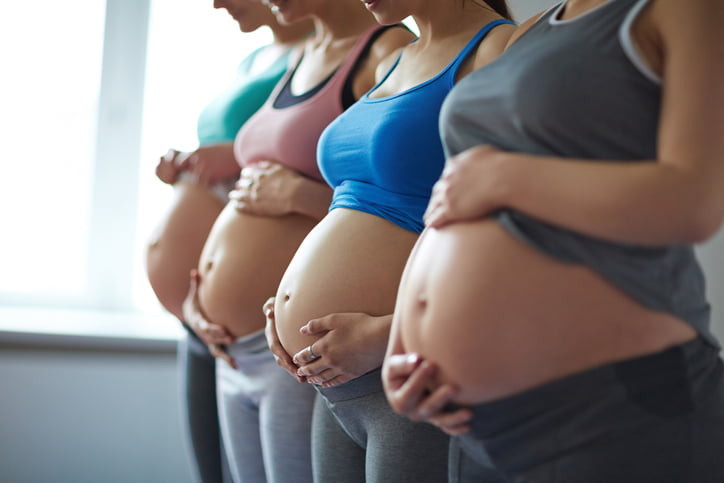Just as there are skin issues that arise during pregnancy, postpartum skin conditions can also develop after you give birth. Fortunately, they are largely treatable, so there is no need to fret – your prepartum skin and hair will bounce back in no time. We take a look at the 5 most common conditions.
1. Melasma
Also known as “the mask of pregnancy”, this pigmentation condition is due to increased melanin production and is caused by a combination of genetic and hormonal factors, as well as sun exposure. It tends to affect Asian skin more, appearing as brownish patches over the cheeks, forehead, temples, nasal bridge, upper lips and jawline.
It is best controlled by avoiding the sun and with regular use of sunscreen, lightening creams and topical agents, although it can persist in some cases. Other treatments include chemical peeling, intense pulsed light therapy and certain forms of laser therapy. Inform your doctor if you are breastfeeding – certain ingredients such as tretinoin and hydroquinone that can be found in some skincare products should be avoided by breastfeeding mums.
2. Eczema/Dermatitis
Eczema or dermatitis is a relatively common yet noninfectious condition, so it will not spread to your baby. Often it is an aggravation of an underlying sensitive skin condition that has been present for some time. For new mothers, it can also develop as a result of excessive water contact due to frequent handwashing.
Use moisturiser regularly to soothe inflamed and itchy skin. Topical steroid creams are prescribed to calm inflamed skin and are safe to use even when breastfeeding. Use a gentle soap substitute and continue to moisturise even after the skin rash has settled.
3. Stretch Marks
Affecting at least 90 percent of pregnant women, stretch marks are a form of scarring that appear red when fresh, but most will fade to white after delivery. During pregnancy, intensive use of moisturisers may help the condition, and there are specially formulated stretch mark creams on the market that you can continue using after delivery. For more severe cases, dermatologists may prescribe tretinoin cream to use postpartum when you are not breastfeeding. Some skin-tightening laser treatments are safe options to remove stretchmarks even if you are breastfeeding, but these usually require multiple sessions.
4. Telogen Effluvium
This condition results in hair fall that usually occurs about three months after delivery. Though increased hair fall can be distressing to new mothers, it is almost always a self-limiting condition, and you will usually recover within six months. If you notice increased hair fall, consult a doctor to exclude other causes of hair loss (such as low iron levels). Topical medications can be used if you are not breastfeeding.
5. Acne
Caused by an inflammation in the facial oil glands, acne may be aggravated by hormonal changes. Most of the time, acne clears within a few weeks or months, but medical treatment should be sought to prevent the risk of scarring. There are many topical agents that can be safely used even when breastfeeding. In more severe cases, oral medications such as antibiotics may be required.
Thomson Specialist Skin Centre is a skin specialist clinic in Singapore that is a member of the Thomson Medical Group. For dermatology treatments and skincare regimen, schedule an appointment with us today.

